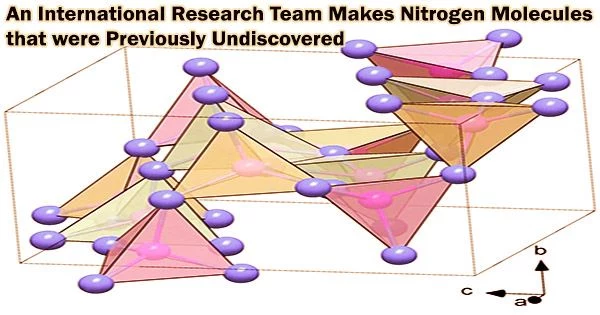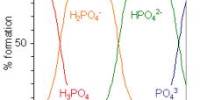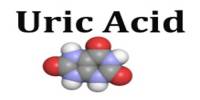Compounds called non-metal nitrides have covalent connections connecting nitrogen to non-metallic elements. They have increasingly come into attention in materials research due to their technologically intriguing features.
An multinational team led by scientists from the University of Bayreuth reveals previously unidentified phosphorus-nitrogen compounds that were created under extremely high pressures in Chemistry A European Journal.
They include structural elements whose existence has never before been demonstrated objectively. The work is a prime example of the enormous, as of yet unrealized potential of nitrogen chemistry high-pressure research.
At a pressure of 72 gigapascals, the researchers were successful in synthesizing a hitherto unidentified alteration of the phosphorus nitride P₃N₅, the polymorph δ-P₃N₅. In the diamond anvil cell, phosphorus nitride PN₂ produced at 134 gigapascals. Both substances fall into the category of ultra-incompressible materials because their bulk moduli are higher than 320 GPa.
Synchrotron X-ray diffraction analysis density functional theory calculations led the researchers to the main cause of this high strength: the crystal structures of δ-P₃N₅ and PN₂ contain a dense network of PN₆ octahedra with a phosphorus atom surrounded by six nitrogen atoms. These structural units have previously only been hypothesized to exist; however, they have recently been demonstrated empirically.
The α′-P₃N₅ formed on decompression of δ-P₃N₅ exemplifies how nitrogen compounds with highly interesting properties can be discovered via a detour of high-pressure syntheses. Further investigations should now follow to explore potential applications of this new material. With our publication, we want to encourage more high-pressure and high-temperature research on non-metal nitrides which have been largely neglected in comparison with metal nitrides. New studies in this exciting field can significantly expand our understanding of nitrogen chemistry. They will also potentially contribute to the discovery of recyclable materials for everyday products.
Professor Dr. Dr. h.c. Natalia Dubrovinskaia
When the compression pressure was decreased, the polymorph δ-P₃N₅ changed into another, previously unidentified modification of P₃N₅: at seven gigapascals, the polymorph α′-P₃N₅ was created. This is a new solid material that remains stable under normal ambient conditions.
The crystal structure of this phosphoronitride is also unusual, being composed of PN₄ tetrahedra: A phosphorus atom is located in the center of these pyramid-shaped structural units, while the four “corners” are each occupied by a nitrogen atom.
α′-P₃N₅ has a substantially higher density than the well-known polymorph α-P₃N₅, which is already being studied in research as a potential industrial material. Because of this, it is much harder and conceivably much more appealing in terms of engineering applications.
“The α′-P₃N₅ formed on decompression of δ-P₃N₅ exemplifies how nitrogen compounds with highly interesting properties can be discovered via a detour of high-pressure syntheses. Further investigations should now follow to explore potential applications of this new material. With our publication, we want to encourage more high-pressure and high-temperature research on non-metal nitrides which have been largely neglected in comparison with metal nitrides. New studies in this exciting field can significantly expand our understanding of nitrogen chemistry. They will also potentially contribute to the discovery of recyclable materials for everyday products,” says Bayreuth crystal physicist Prof. Dr. Dr. h.c. Natalia Dubrovinskaia from the Laboratory of Crystallography at the University of Bayreuth, who coordinated the research.
















